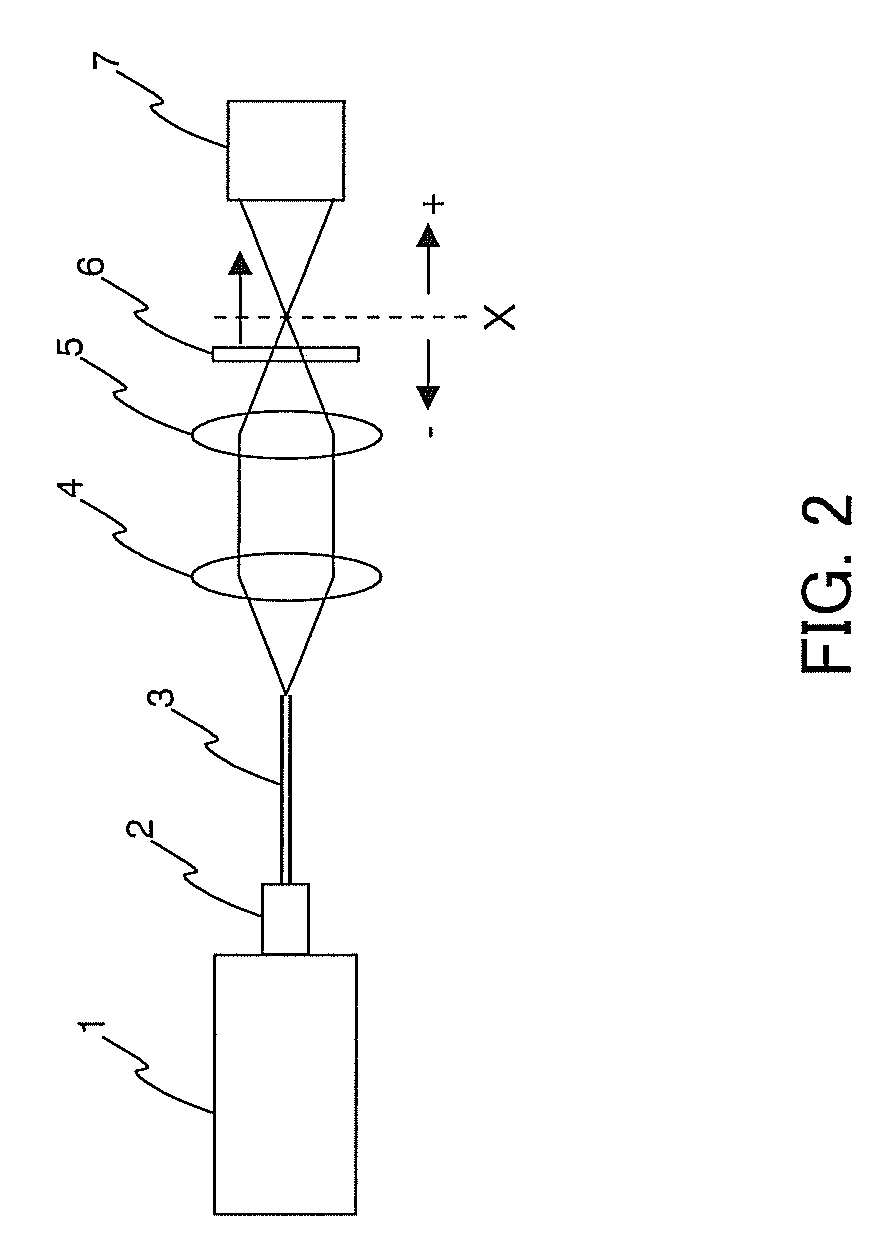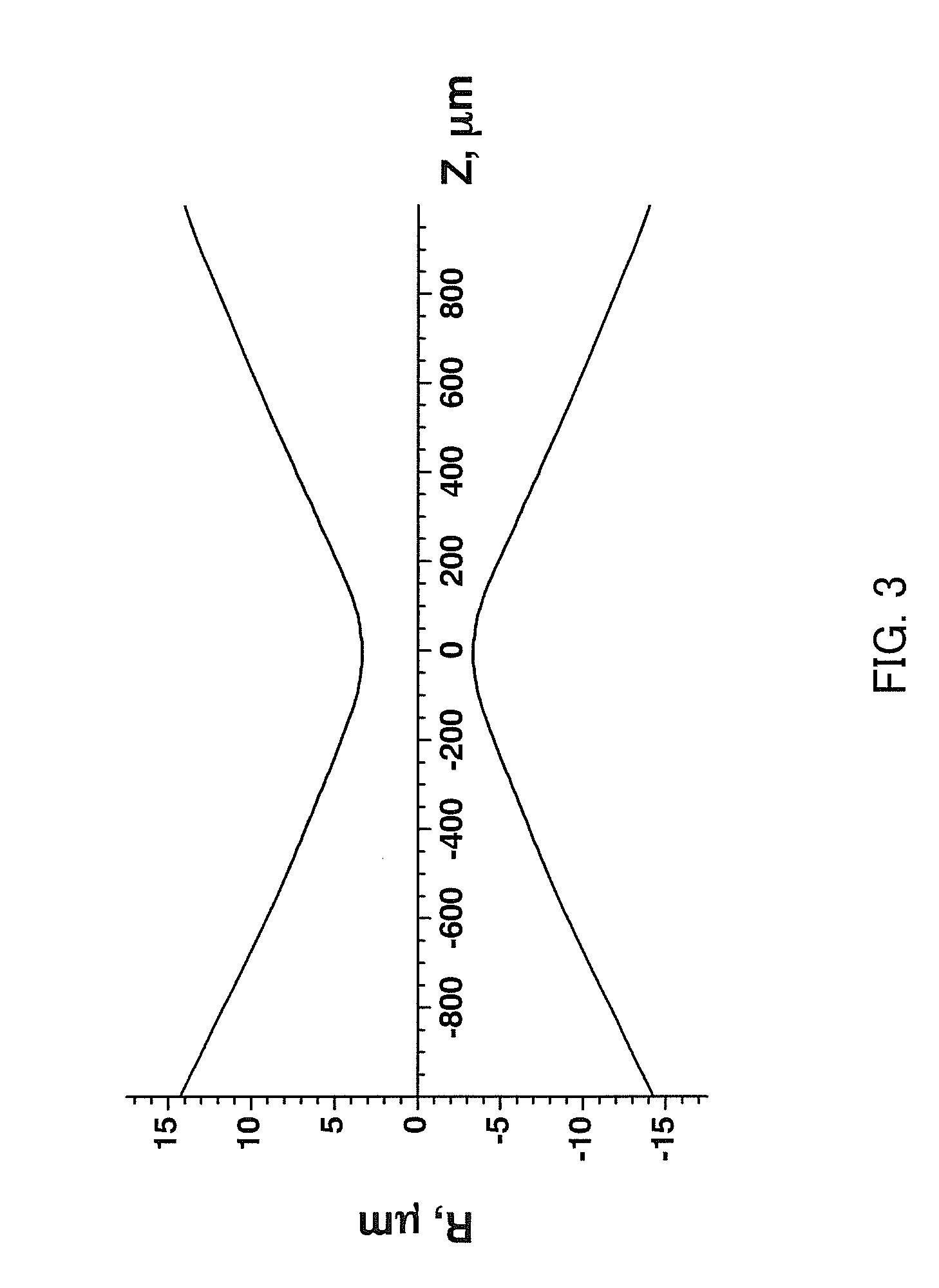Saturable Absorber of Polyimide Containing Dispersed Carbon Nanotubes
a polyimide and absorber technology, applied in the field of saturable absorbers, can solve the problems of poor attachment to glass substrates, difficult formation of swnts into thin strips, and inability to produce devices with excellent reproducibility, etc., and achieve excellent device reproducibility, excellent light transmittance and heat resistance, excellent transparency and heat resistance.
- Summary
- Abstract
- Description
- Claims
- Application Information
AI Technical Summary
Benefits of technology
Problems solved by technology
Method used
Image
Examples
example 1
Preparation of Carbon Nanotube Dispersion Liquid
[0039]SWNTs (3 mg) were added to and mixed with a solution of an NMP (N-methylpyrrolidone) solvent (30 g) and a nonionic surfactant Triton X-100 (30 mg), and treated with an ultrasonic wave at 20 kHz for 5 hours. Then the dispersion was filtered with a glass fiber filter (GC-50, retaining particle size 0.5 μm) to obtain a carbon nanotube dispersion liquid.
(Preparation of Carbon Nanotube-Dispersed Polyimide)
[0040]A commercially available, solvent soluble polyimide (Q-AD-XA100KI available from PI R&D Co., Ltd.) was dissolved in an NMP solvent (30 g). The obtained polyimide-mixed solvent and the carbon nanotube dispersion liquid prepared above were mixed and stirred, to obtain a black colored uniform solution. The NMP solvent was partly evaporated in vacuo such that the mixture had an appropriate viscosity, and then part of the mixture was dropped onto a glass substrate and spread by a doctor blade method, and the NMP solvent was evaporat...
example 2
[0045]SWNTs dispersed liquid were prepared by the steps of adding 200 mg of polyvinylpyrrolidone (PVP) powder having an average molecular weight of 360,000 to the dispersion solvent of Example 1, stirring the resultant to dissolve the powder, and filtrating the mixture (retaining particle size 0.5 μm), and the SWNT dispersed liquid was mixed and stirred with the polyimide obtained in Example 1, and then the mixture was formed into an SWNT-dispersed polyimide thin film on a glass substrate using a doctor blade method. As a result of observing the thin film by an optical microscope, aggregation of the SWNT was not found.
[0046]The saturable absorption property of the thin film was measured by the Z-scanning method in the same manner as Example 1. Increase of the transmittance was observed around the position of Z=0 (the focal spot), and thereby it was found that the SWNT dispersed polyimide thin film shows absorption saturation in an absorption band of the near-infrared region.
PUM
| Property | Measurement | Unit |
|---|---|---|
| particle size | aaaaa | aaaaa |
| retaining particle size | aaaaa | aaaaa |
| thickness | aaaaa | aaaaa |
Abstract
Description
Claims
Application Information
 Login to View More
Login to View More - R&D
- Intellectual Property
- Life Sciences
- Materials
- Tech Scout
- Unparalleled Data Quality
- Higher Quality Content
- 60% Fewer Hallucinations
Browse by: Latest US Patents, China's latest patents, Technical Efficacy Thesaurus, Application Domain, Technology Topic, Popular Technical Reports.
© 2025 PatSnap. All rights reserved.Legal|Privacy policy|Modern Slavery Act Transparency Statement|Sitemap|About US| Contact US: help@patsnap.com



